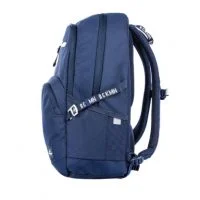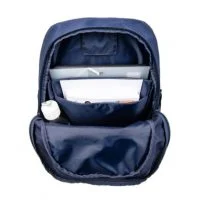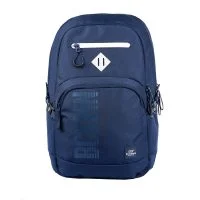It’s hard to believe we are in the final week of August and back to school is just around the corner. While it’s common to see kids carrying bags, slung over one shoulder, loaded down with books, computers and school supplies this can lead to long-term head, neck and shoulder pain. As you head out to do your back to school shopping follow our Back-to-School Backpack Guide to help your child carry their backpack with ease.
While most of your shopping for new school supplies may be complete, there’s always time to review one of the most essential items that students will use everyday – their backpacks! Finding the right backpack for your child will support proper spinal health because carrying a heavy load, especially while using a poorly designed bag, can lead to poor posture and over time, lead to muscle strain, headaches, back, neck and arm pain. A heavy backpack carried on one shoulder forces the muscles and spine to compensate for the uneven weight. This places stress on the mid and lower back.
Research indicates that during the teenage years more than 50 per cent of young people will experience at least one episode of lower back pain. If your child complains of back pain or numbness or weakness, consult a chiropractor for an evaluation.
As homework starts to pile up, binders and laptops, and lunches and snacks, can start to add up and weigh backpacks down! Below is our chiropractor approved guide on what to what to look for in a backpack and other tips to consider.
What to look for:

Wide padded shoulders: Too much weight on the shoulders and neck can impair circulation.
- Both shoulder straps should be used and adjusted so the backpack sits flush against the back.
- Backpacks should never be worn over only one shoulder – this can result in neck, shoulder and back pain.

A padded back: Provides extra comfort and protects oddly shaped objects in the bag.

Compartments: Multiple compartments help distribute the load evenly and keep items organized.

Try it on: Whenever possible, try the backpack on and assess how it feels when fully loaded. Adjust the straps to ensure a comfortable fit and walk around to get a sense of how it distributes weight.
- Test the fit of the backpack by sliding your hand between the backpack and your child’s back – if you can’t slide your hand in, the backpack is too snug.
Pack it light! Wear it right!
- Is the backpack reasonably proportional to the size of the person? The bottom of the bag should sit at waist level.
- How much does the bag weigh when it’s full? Some research suggests that backpacks should be no more than 10% of the wearer’s body1. That means if a student weighs 130 pounds, their backpack should only weigh 13 pounds.
- Your child’s backpack should only contain what is needed for that day.
- Pack the heaviest items closest to the back and in the middle of the backpack.
By purchasing the right backpack and wearing it correctly, you can minimize discomfort and poor posture habits. For more tips speak to your chiropractor to discuss your child’s specific needs. Click here to book your next appointment at Evolve.
References
1 Perrone, Michelle et al. “The Impact of Backpack Loads on School Children: A Critical Narrative Review.” International journal of environmental research and public health vol. 15,11 2529. 12 Nov. 2018, doi:10.3390/ijerph15112529.